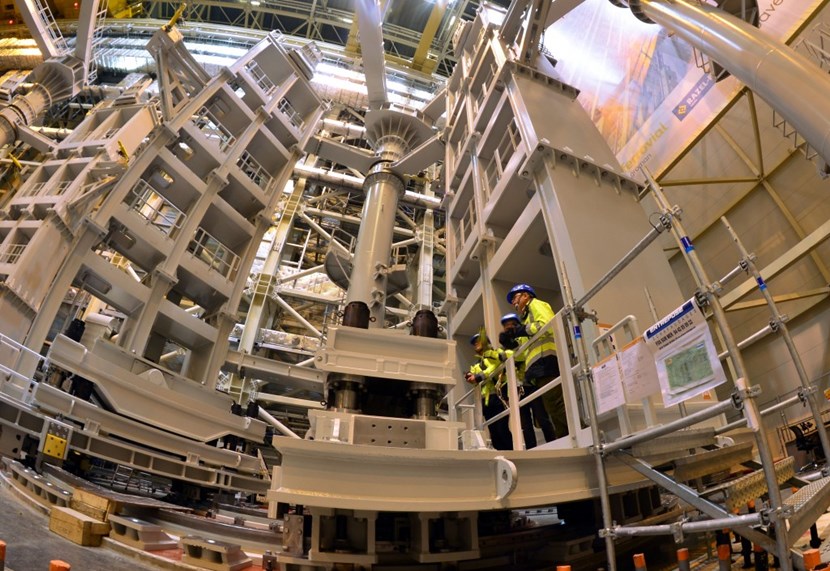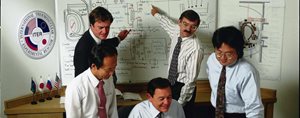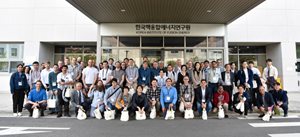ITER NEWSLINE
-
Assembly tools
Titan moves its little finger
Assembly tools | Titan moves its little finger
A few days ago, one of the Titans in the Assembly Hall woke up and flexed its little finger. The movement was slow, almost imperceptible. Like in a living body, nerves and muscles (in the form of signal cables and hydraulic pumps) coordinated their action to lift and lower one of the upper alignment units at the top of the giant sector sub-assembly tool—one of the first steps in the mechanical tests program being performed on the spectacular, 20-metre high twin Titans.

No fewer than 20 hydraulic cylindrical rods actuated by hydraulic/pneumatic forces enable the giant tool to adjust the different elements of the pre-assembly with millimetric accuracy. The hydraulic fluid circulates between dozens of pumps throughout a 500-metre-long network of pipes.
The
sector sub-assembly tools (SSAT) are the largest tools in the ITER assembly panoply. Their task is to pre-assemble a vacuum vessel sector with its thermal shield and two toroidal field coils. Opening and closing their arms, adjusting the position of their upper and lower alignment units, they will repeat sub-assembly operations nine times, once for each of the Tokamak's nine vacuum vessel sectors.
The pre-assemblies, weighing approximately 1,200 tonnes, will then be transferred to the assembly pit by way of a double overhead gantry crane to be integrated into the machine.
Before this can happen, however, two major milestones need to be accomplished: the completion of full mechanical and load tests on both SSATs, and the erection of a steel structure over of the Tokamak Building to "close over" the Tokamak Pit and allow the Assembly Hall crane bays to be extended.
Load tests are scheduled to begin in early June, and preparation work has already started for the extension of the crane bays.
Click here to view a video of the Titan's awakening.
return to the latest published articles







